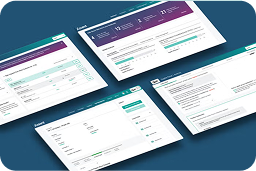Value Is More Important Than Price
For manufacturers, software decisions come down to one question: How quickly will this investment return value? In supply chain management, where compliance, market access, brand value, and operational efficiency intersect, that question is even more important. It’s crucial, however, not to confuse a low price with true value.
Lower-cost software options can seem appealing, especially when they promise fast automation and overnight implementation. But software that only handles basic compliance tasks rarely delivers impactful ROI. Over time, limited functionality, manual workarounds, and lack of visibility create hidden costs that offset any initial savings.
Manufacturers that focus on long-term outcomes such as efficiency, scalability, and actionable insights consistently achieve stronger financial performance from their supply chain sustainability software investments.
Why Checkbox Compliance Limits ROI
Many entry-level tools address compliance at the surface level. They collect supplier data and generate reports but don’t help teams understand or act on that information. The result is what many manufacturers describe as “checkbox compliance”: technically complete but strategically shallow.
This approach may help meet some regulatory requirements, but it doesn’t create value beyond compliance. Without integrated analytics, supplier risk insights, or proactive reporting, teams remain reactive and siloed. The end result is duplicated effort across departments, especially around purchasing and product design.
By contrast, a data-driven platform like Assent’s product compliance software automates data analysis and helps speed up decision-making. It connects compliance data across business functions, helping companies identify risks earlier and focus on the suppliers or materials that matter most. Organizations using Assent have reported 2–3X improvements in productivity as teams shift from performing administrative tasks to taking on strategic work that drives measurable outcomes.
The Hidden Costs of Checkbox Solutions
Lower-cost compliance tools often conceal operational burdens that increase total cost of ownership over time. These hidden costs won’t appear in an initial proposal but can quickly erode ROI once the system is in use, often within the first year.
Here are the most common pitfalls executives encounter when choosing “budget-friendly” compliance software:
- Limited regulatory coverage: Basic tools often stop at major frameworks like RoHS or REACH, leaving teams manually tracking more complex regulations such as Toxic Substances Control Act (TSCA)’s PFAS requirements or the EU Deforestation Regulation. Gaps in regulatory coverage increase the likelihood of non-compliance or lost market access.
- High supplier management overhead: Without supplier education, multilingual support, or automated, managed outreach, internal teams spend countless hours chasing supplier responses.
- Manual data validation: Many “checkbox” tools collect information but don’t validate it for completeness or accuracy. Teams must manually sift through hundreds of low-quality supplier declarations.
- Lack of expertise: Low-cost software usually doesn’t include compliance expertise or ongoing program support. Companies often must hire consultants or dedicate internal resources to monitor changing requirements.
- Integration and scalability gaps: Entry-level tools rarely connect with enterprise resource planning (ERP) or product lifecycle management (PLM) systems, preventing you from bringing new products to market quickly.
- Reactive risk management: Without predictive analytics or AI-driven insights, these tools flag risks only after problems occur. You face increased exposure to supply disruptions, reputational damage, and costly remediation.
By choosing a platform built to scale (with regulatory intelligence, AI, and managed support built in), you shift the focus from “running compliance” to driving compliance as a performance lever. This is how you gain the productivity, insight, and ROI advantages that justify a more strategic investment.
Building In-House: The Overhead You Don’t See
Some manufacturers consider developing their own internal compliance systems to avoid licensing costs. While it may appear efficient at first, the long-term economics tell a different story.
Internal systems require continuous investment in IT infrastructure, data security, regulatory tracking, and user support, often spanning multiple departments including engineering, procurement, legal, and quality. Each regulatory change or process update demands additional time and budget.
These hidden costs accumulate quickly. Moreover, maintaining internal expertise is challenging in a high-turnover environment, where knowledge gaps can lead to compliance delays or missed reporting deadlines.
Purchasing a platform purpose-built for manufacturing supply chains eliminates those risks. It also transfers the maintenance, regulatory monitoring, and system evolution burden to a partner with dedicated teams and proven processes, ensuring ongoing value and predictable operating costs.
Thinking of developing your own in-house compliance system? Think again. Download the Build vs. Buy Guide to learn more.
The Hidden Cost of “Free” Tools
Spreadsheets and email remain the default tools for many organizations starting their compliance journey. They’re accessible and familiar, but they’re also among the most resource-intensive solutions.
Manual data collection and validation consumes hours of a compliance team’s time. Version control errors, inconsistent supplier responses, and lack of centralized visibility introduce inefficiencies that slow reporting and increase the risk of non-compliance.
Modern supply chain management software eliminates this friction. Automated data validation, supplier communication tracking, and built-in audit trails free up teams to focus on improving performance, not chasing information. Over time, the opportunity cost of manual work far exceeds the investment in a specialized platform.
What Real ROI Looks Like
The return on investment for advanced supply chain software isn’t defined by lower costs alone. It’s defined by higher impact. Leading manufacturers measure value through efficiency, responsiveness, and risk reduction.
Assent’s platform delivers measurable outcomes across these dimensions:
- Operational Efficiency: Streamlined workflows and expert-trained AI data tools drive 2–3X productivity improvements
- Regulatory Agility: Continuous updates ensure readiness for evolving requirements
- Risk Visibility: Deep supply chain insight enables faster, evidence-based decision-making
- Sustained Performance: Dedicated program support and expertise reduce long-term administrative overhead
These outcomes translate directly to stronger compliance resilience, improved market access, and a faster path to ROI.
That’s one reason why Verdantix named us a leader in the Green Quadrant: Product Compliance Software 2025 report. You can access this independent analyst report to learn more here.
Compare on Performance, Not Price
For organizations managing complex supply chains, the true cost of software extends beyond the purchase order. Don’t get tricked by a lower price tag: Short-term savings on low-cost tools often lead to higher operational costs, slower response times, and increased compliance risk.
The most successful manufacturers view compliance technology as an investment in performance that enhances visibility, supports strategic goals, and protects enterprise value.
When the goal is long-term ROI, the best supply chain sustainability software isn’t the cheapest option. It’s the one that delivers measurable results. And that means choosing Assent.
Book a demo to see how Assent helps manufacturers like you achieve greater productivity, stronger compliance, and lasting operational efficiency.
FAQ: Supply Chain Software ROI & Value
Learn how to evaluate the long-term value of supply chain sustainability software and product compliance management with answers from our regulatory experts.







